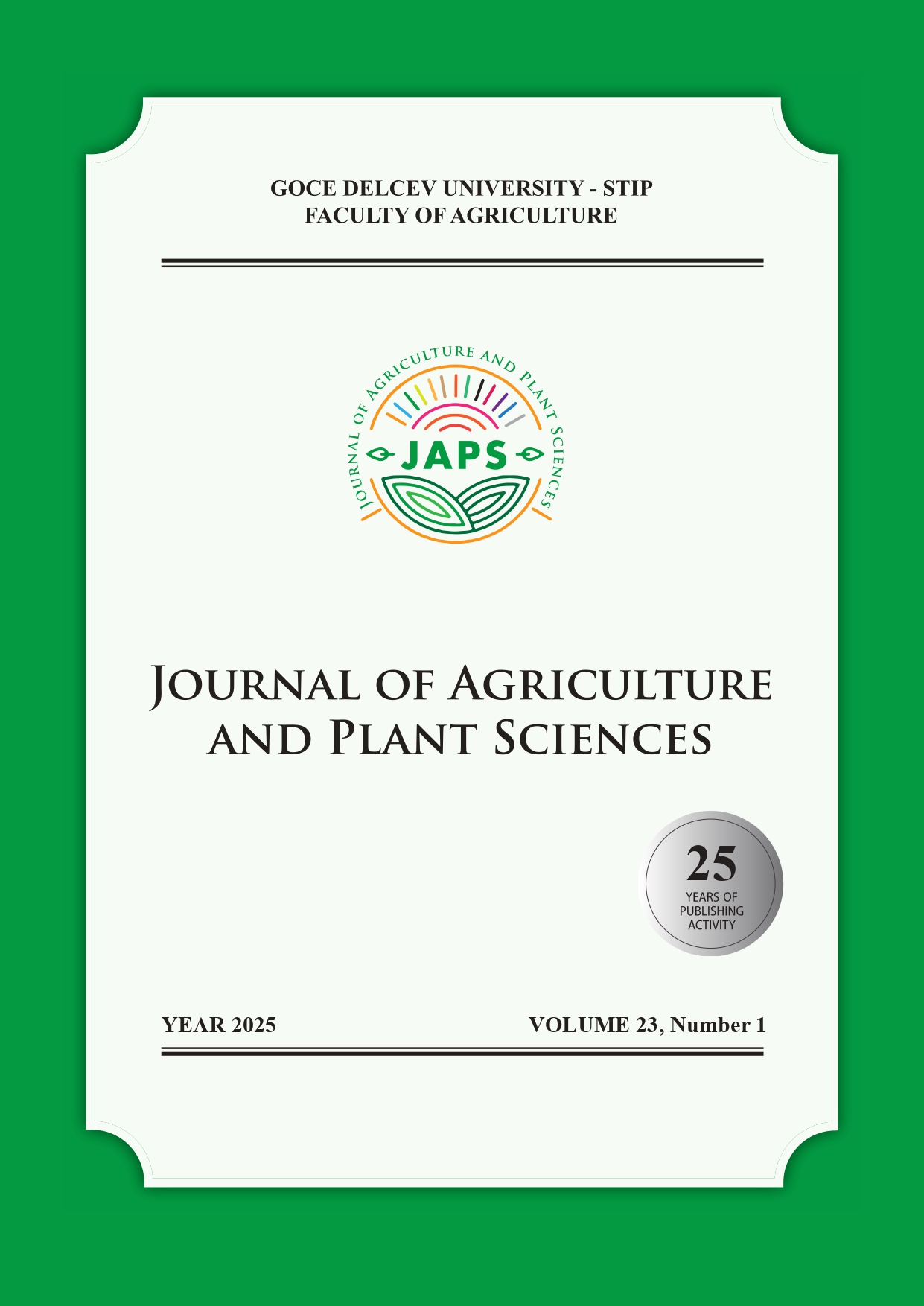A COMPARATIVE STUDY OF CARBON FARMING AND CONVENTIONAL SYSTEMS IN CORN AND SUNFLOWER CULTIVATION: CASE STUDY IN NORTH MACEDONIA
DOI:
https://doi.org/10.46763/JAPS2523119bKeywords:
carbon farming, conventional agriculture, soil organic carbon, total nitrogen, corn, sunflower, agroecological practices, soil fertility, climate-smart agriculture, sustainable soil managementAbstract
This study conducts a comparative evaluation of carbon farming versus conventional agricultural systems in corn (Zea mays L.) and sunflower (Helianthus annuus L.) cultivation, examining their impacts on soil carbon and nitrogen dynamics alongside other soil properties during the 2024–2025 growing season. Soil samples were collected at three critical stages—vegetation onset, midseason, and harvest—to quantify total organic carbon (TOC) and total nitrogen (TN) under each management regime.
Results reveal that carbon farming consistently and significantly enhanced TOC and TN compared to conventional agriculture. In corn plots, carbon farming induced a progressive accumulation of both TOC and TN, driven by increased organic matter inputs and stimulated microbial activity—trends consistent with established organic amendment outcomes. Sunflower plots exhibited a delayed but notable increase in soil C and N, likely reflecting the crop’s high nutrient uptake and distinct biomass turnover patterns.
Conversely, conventional management displayed stable or declining TOC and TN trends, underscoring the adverse impacts of reliance on synthetic inputs on soil fertility . These findings highlight carbon farming's effectiveness in enhancing soil health by improving nutrient retention and increasing organic matter, aligning with climate-smart and regenerative agriculture principles .
In summary, carbon farming presents a promising strategy for boosting soil carbon and nitrogen stocks in cereal and oilseed production systems, offering co-benefits for soil fertility and climate mitigation. Its implementation may advance sustainable crop production and long-term soil resilience.
Downloads
Published
Issue
Section
License
The intellectual property and copyright on the original content of all scientific contributions in the published paper shall remain with the authors. Authors give permission to the JAPS owner to publish the paper. All authors agree to publish the paper under Attribution-NonCommercial-NoDerivatives 4.0 International license (CC BY-NC-ND 4.0).

